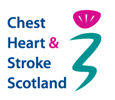Respiratory symptom management - Oramorph
Breathlessness is a common and distressing symptom for patients with condition such as chronic obstructive pulmonary disease (COPD) and lung fibrosis. Breathlessness can be very distressing for patients and their families/carers. Most people normally associate morphine with pain however it can be beneficial for patients experiencing more significant breathlessness as their respiratory disease progresses and they are on all other maximum therapies, pharmacological and non-pharmacological.
- Oramorph is a trade name/mark for morphine sulphate, which is absorbed in to the blood stream for a rapid response to reduce breathlessness and anxiety. It can have benefits in 30-60 mins. Standard release formulas of oramorph clear from the body within 12 hours. Longer acting formulas have slower onset and longer duration.
- The drug is normally taken in liquid form.
- The initial dose should be low and only as required. The dose can be increased if required, depending on the patient's need. The dose of oramorph used for breathlessness is safe and not considered to be addictive and is considerably lower than the dose used for pain control.
- Patient's response to the drug should be monitored to determine the therapeutic benefit and any side effects, in particular slowing of their breathing rate.
- Oramorph can be given to patients feeling breathless at rest and/or in preparation for activities known to bring on breathlessness such as showering or dressing.
Side effects:
- Constipation.
- Nausea.
- Vomiting.
- Itching.
- Drowsiness.
Additional medication may be required to address the above side effects such as laxatives, antiemetics and antihistamines.
As disease progresses and patients approach the end of life, morphine may also be used in different preparations for pain control using skin patches and syringe drivers.




